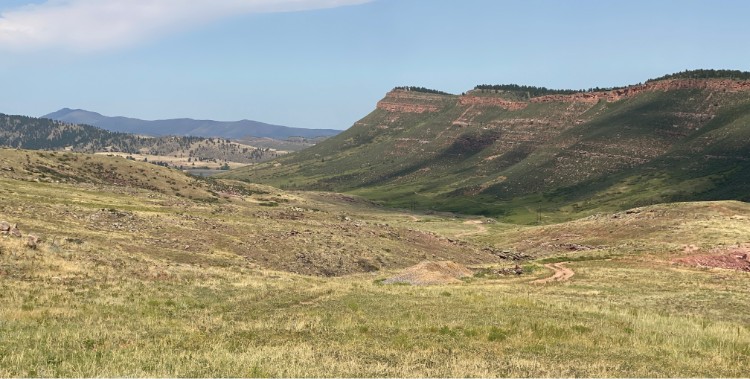Rawhide operates as a zero-liquid discharge facility, which means all cooling water, process water, and industrial stormwater is managed on-site. This unique system saves water and minimizes the possibility of facility discharges. Water flows from the reservoir into the plant where it is used for cooling steam. The temperature of the water increases during the process before it is discharged back to the reservoir to be used again. Process water used in the air quality control system and ash sluicing water are reused before ultimately being consumed in the plant processes.
Hamilton reservoir is underlain by naturally occurring, highly impermeable clay and shale strata that minimizes seepage. Due to the arid conditions, some evaporation does occur.
Secondary-treated effluent wastewater originating from the City of Fort Collins Drake Water Reclamation Facility comprises most of the water stored in the reservoir. This "reclaimed" water arrives at Rawhide through a 26-mile long, 24-inch diameter pipeline and receives further treatment before being released to the reservoir. This use of reclaimed water in place of higher quality water frees up resources that benefit local communities.

2023 water resources reference documentLearn more about Platte River's water resources, including the history behind Platte River’s various assets and operating agreements, a summary of current water-related operations and projects at Platte River and estimates of Platte River’s future water demands and operations. Platte River's Water Resources Reference Document is updated annually.
Chimney Hollow Reservoir
Platte River and 11 other entities participate in the construction of the Chimney Hollow Reservoir to store Windy Gap water using existing water rights. For Platte River, the project will increase water resource reliability for current and future electric generation operations by providing a firm supply of Windy Gap water. Rawhide Energy Station relies on Windy Gap water for service, process and cooling water needs and to fulfill its water exchange requirements under the Reuse Agreement with the City of Fort Collins.
the reservoir is needed because the Windy Gap project cannot currently pump water from its source on the Colorado River during wet periods due to the lack of dedicated storage capacity or during dry periods due to the lack of available water supply. The Chimney Hollow Reservoir Project will provide Platte River and all project participants with reliable water storage for water available during wet periods and a reserve to draw upon during dry periods. As northern Colorado faces projected water shortfalls in the coming decades, this collaborative project will help ensure water supplies are available to help meet the needs of the region, including Platte River and Platte River’s owner communities.
For more detailed information, visit Northern Water's website